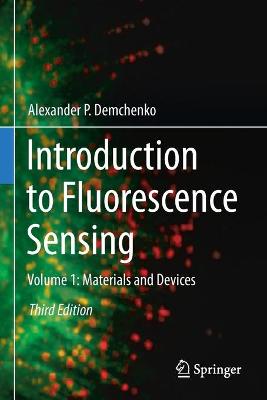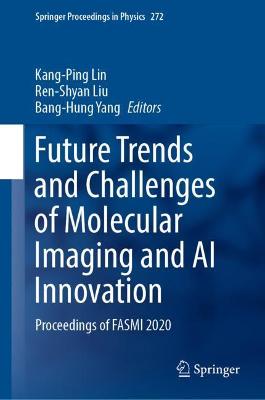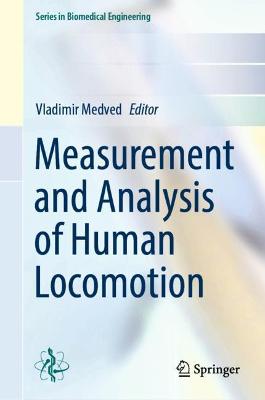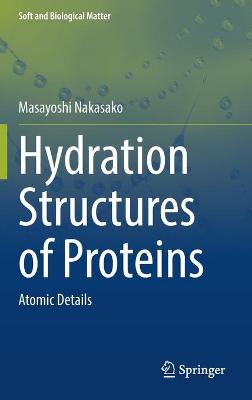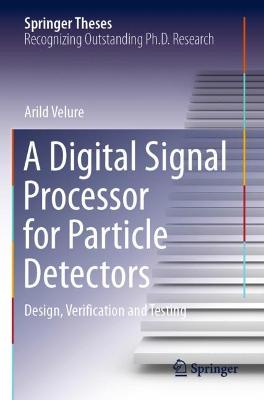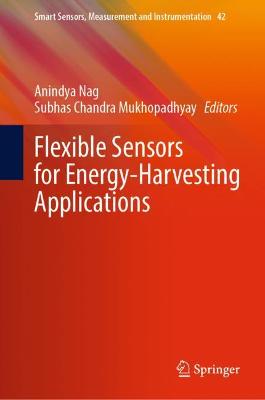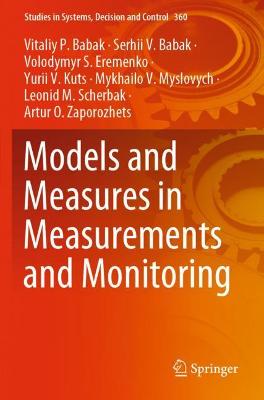Introduction to Fluorescence Sensing
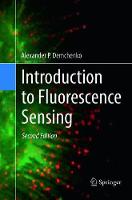 -15%
portes grátis
-15%
portes grátis
Introduction to Fluorescence Sensing
Demchenko, Alexander P.
Springer International Publishing AG
03/2019
794
Mole
Inglês
9783319793184
15 a 20 dias
1670
Chapter 2. Basic principles
2.1. Overview of strategies in molecular sensing
2.2. Labeled targets in fluorescence assays
2.3. Competitor displacement assays
2.4. Sandwich assays
2.5. Catalytic biosensors
2.6. Direct reagent-independent sensing
Sensing and thinking: How to make the best sensor? Comparison of basic principles
Chapter 3. Theoretical aspects
3.1. Parameters that need to be optimized in every sensor
3.2. Determination of binding constants
3.3. Modeling the ligand binding isotherm
3.4. Kinetics of target binding
3.5. Formats for fluorescence detection
Sensing and thinking: How to provide the quantitative measure of target binding?
Chapter 4. Fluorescence detection techniques
4.1. Fluorescence fundamentals
4.2. Intensity-based sensing
4.3. Anisotropy-based sensing and polarization assays
4.4. Lifetime-based fluorescence response
4.5. Excimer and exciplex formation
4.6. Foerster resonance energy transfer (FRET)
4.7. Wavelength-shift sensing
4.8. Two-band wavelength-ratiometric sensing with a single dye
Sensing and thinking: The optimal choice of fluorescence detection technique
Chapter 5. Molecular-size fluorescence emitters
5.1. Fluorophores and their characteristics
5.2. Organic dyes as labels and tags
5.3. Organic dyes as fluorescence reporters
5.4. Visible fluorescent proteins
5.5. Luminescent metal complexes
5.6. Few-atom clusters of noble metals
Sensing and thinking: Which molecular reporter to choose for particular needs?
Chapter 6. Nanoscale fluorescence emitters
6.1. Introduction to light emitting nano-world
6.2. Dye-doped nanoparticles and dendrimers
6.3. Conjugated polymers
6.4. Fluorescent carbon nanostructures
6.5. Semiconductor quantum dots
6.6. Up-converting nanocrystals
Sensing and thinking: Nanoscale emitters, what are the advantages?
Chapter 7. Fluorescent nanocomposites
7.1. Fluorescence enhancement and quenching in nanocomposites
7.2. Modulation of emission parameters in multi-fluorophore systems
7.3. Optical choice of FRET donors and acceptors
7.4. Wavelength referencing, multiplexing and multicolor coding
7.5. Combining fluorescence with magnetic, NMR enhancing and other functionalities
Sensing and thinking: Achieving multitude of functions in designed nanocomposites
Chapter 8. Recognition units
8.1. Multivalency: the principle of molecular recognition
8.2. Recognition units built of small molecules
8.3. Antibodies and their recombinant fragments
8.4. Ligand-binding proteins and protein-based display scaffolds
8.5. Designed and randomly synthesized peptides
8.6. Nucleic acid aptamers
8.7. Peptide nucleic acids
8.8. Molecularly imprinted polymers
Sensing and thinking: Selecting the tools for optimal target recognition
Chapter 9. Mechanisms of signal transduction
9.1. General principles of signal transduction
9.2. Basic signal transduction mechanisms: electron, charge and proton transfer
9.3. Signal transduction via excited-state energy transfer
9.4. Superenhancement and superquenching
9.5. Signal transduction via conformational changes
9.6. Signal transduction via association and aggregation phenomena
9.7. Smart sensing with logical operations
Sensing and thinking: How to couple the recognition and reporting functionalities?
Chapter 10. Supramolecular structures and interfaces for sensing
10.1. Self-assembled supramolecular systems10.2. Building blocks for supramolecular sensors10.3. Conjugation, labeling and cross-linking.
10.4. Supporting and transducing surfaces.
10.5. Functional lipid and polymer bilayersSensing and thinking: Extending sensing possibilities with smart nano-ensembles
Chapter 11. Non-conventional generation and transformation of response
11.1. Chemiluminescence and electrochemiluminescence
11.2. Bioluminescence
11.3. Radioluminescence and Cherenkov effect
11.4. Two-photon excitation and stimulated emission
11.5. Direct optical generation of electrical response signal
11.6. Evanescent-wave fluorescence sensors
11.7. Plasmonic enhancement of luminescence emission
Sensing and thinking: Eliminating light sources and detectors: what remains?
Chapter 12. The sensing devices
12.1. Instrumentation for fluorescence spectroscopy
12.2. Optical waveguides and optodes
12.3. Multi-analyte spotted microarrays
12.4. Suspension arrays and barcoding
12.5. Microfluidic devices.
12.6. Devices incorporating whole living cells
Sensing and thinking: Optimizing convenience, sensitivity and precision for obtaining the proper sensor response
Chapter 13. Focusing on targets
13.1. Temperature, pressure and gas sensing
13.2. Probing the properties of condensed matter
13.3. Detection of small molecules and ions
13.4. Nucleic acid detection and sequence identification
13.5. Recognition of protein targets
13.6. Polysaccharides, glycolipids and glycoproteins
13.7. Detection of harmful microbes
Sensing and thinking: Adaptation of sensor units for multi-scale and hierarchical range of targets
Chapter 14. Sensing inside the living cells
14.1. Modern fluorescence microscopy
14.2. Super-resolution microscopy
14.3. Sensing and imaging on a single molecule level
14.4. Site-specific intracellular labeling and genetic encoding
14.5. Advanced nanosensors inside the cells
14.6. Sensing within the cell membrane
14.7. Sensing different targets in cell interior
Sensing and thinking: Intellectual and technical means for addressing the systems of great complexity
Chapter 15. Sensing the whole body and clinical diagnostics
15.1. Ex-vivo diagnostics
15.2. Sensing the whole body
15.3. Monitoring the cells inside the living body
15.4. Theranostics: combining targeting, imaging and therapy
Sensing and thinking: The strategy of controlling by light of diagnostics and treatment
Chapter 16. Opening new horizons
16.1. Genomics, proteomics and other 'omics'
16.2. The sensors to any target and to immense number of targets
16.3. New level of clinical diagnostics
16.4. Advanced sensors in drug discovery
16.5. Towards sensors that reproduce human senses
16.6. Sensors promising to change the society
Sensing and thinking: Where do we stand and where should we go?
Epilogue.
Appendix. Glossary of terms used in fluorescence sensing
Index
Chapter 2. Basic principles
2.1. Overview of strategies in molecular sensing
2.2. Labeled targets in fluorescence assays
2.3. Competitor displacement assays
2.4. Sandwich assays
2.5. Catalytic biosensors
2.6. Direct reagent-independent sensing
Sensing and thinking: How to make the best sensor? Comparison of basic principles
Chapter 3. Theoretical aspects
3.1. Parameters that need to be optimized in every sensor
3.2. Determination of binding constants
3.3. Modeling the ligand binding isotherm
3.4. Kinetics of target binding
3.5. Formats for fluorescence detection
Sensing and thinking: How to provide the quantitative measure of target binding?
Chapter 4. Fluorescence detection techniques
4.1. Fluorescence fundamentals
4.2. Intensity-based sensing
4.3. Anisotropy-based sensing and polarization assays
4.4. Lifetime-based fluorescence response
4.5. Excimer and exciplex formation
4.6. Foerster resonance energy transfer (FRET)
4.7. Wavelength-shift sensing
4.8. Two-band wavelength-ratiometric sensing with a single dye
Sensing and thinking: The optimal choice of fluorescence detection technique
Chapter 5. Molecular-size fluorescence emitters
5.1. Fluorophores and their characteristics
5.2. Organic dyes as labels and tags
5.3. Organic dyes as fluorescence reporters
5.4. Visible fluorescent proteins
5.5. Luminescent metal complexes
5.6. Few-atom clusters of noble metals
Sensing and thinking: Which molecular reporter to choose for particular needs?
Chapter 6. Nanoscale fluorescence emitters
6.1. Introduction to light emitting nano-world
6.2. Dye-doped nanoparticles and dendrimers
6.3. Conjugated polymers
6.4. Fluorescent carbon nanostructures
6.5. Semiconductor quantum dots
6.6. Up-converting nanocrystals
Sensing and thinking: Nanoscale emitters, what are the advantages?
Chapter 7. Fluorescent nanocomposites
7.1. Fluorescence enhancement and quenching in nanocomposites
7.2. Modulation of emission parameters in multi-fluorophore systems
7.3. Optical choice of FRET donors and acceptors
7.4. Wavelength referencing, multiplexing and multicolor coding
7.5. Combining fluorescence with magnetic, NMR enhancing and other functionalities
Sensing and thinking: Achieving multitude of functions in designed nanocomposites
Chapter 8. Recognition units
8.1. Multivalency: the principle of molecular recognition
8.2. Recognition units built of small molecules
8.3. Antibodies and their recombinant fragments
8.4. Ligand-binding proteins and protein-based display scaffolds
8.5. Designed and randomly synthesized peptides
8.6. Nucleic acid aptamers
8.7. Peptide nucleic acids
8.8. Molecularly imprinted polymers
Sensing and thinking: Selecting the tools for optimal target recognition
Chapter 9. Mechanisms of signal transduction
9.1. General principles of signal transduction
9.2. Basic signal transduction mechanisms: electron, charge and proton transfer
9.3. Signal transduction via excited-state energy transfer
9.4. Superenhancement and superquenching
9.5. Signal transduction via conformational changes
9.6. Signal transduction via association and aggregation phenomena
9.7. Smart sensing with logical operations
Sensing and thinking: How to couple the recognition and reporting functionalities?
Chapter 10. Supramolecular structures and interfaces for sensing
10.1. Self-assembled supramolecular systems10.2. Building blocks for supramolecular sensors10.3. Conjugation, labeling and cross-linking.
10.4. Supporting and transducing surfaces.
10.5. Functional lipid and polymer bilayersSensing and thinking: Extending sensing possibilities with smart nano-ensembles
Chapter 11. Non-conventional generation and transformation of response
11.1. Chemiluminescence and electrochemiluminescence
11.2. Bioluminescence
11.3. Radioluminescence and Cherenkov effect
11.4. Two-photon excitation and stimulated emission
11.5. Direct optical generation of electrical response signal
11.6. Evanescent-wave fluorescence sensors
11.7. Plasmonic enhancement of luminescence emission
Sensing and thinking: Eliminating light sources and detectors: what remains?
Chapter 12. The sensing devices
12.1. Instrumentation for fluorescence spectroscopy
12.2. Optical waveguides and optodes
12.3. Multi-analyte spotted microarrays
12.4. Suspension arrays and barcoding
12.5. Microfluidic devices.
12.6. Devices incorporating whole living cells
Sensing and thinking: Optimizing convenience, sensitivity and precision for obtaining the proper sensor response
Chapter 13. Focusing on targets
13.1. Temperature, pressure and gas sensing
13.2. Probing the properties of condensed matter
13.3. Detection of small molecules and ions
13.4. Nucleic acid detection and sequence identification
13.5. Recognition of protein targets
13.6. Polysaccharides, glycolipids and glycoproteins
13.7. Detection of harmful microbes
Sensing and thinking: Adaptation of sensor units for multi-scale and hierarchical range of targets
Chapter 14. Sensing inside the living cells
14.1. Modern fluorescence microscopy
14.2. Super-resolution microscopy
14.3. Sensing and imaging on a single molecule level
14.4. Site-specific intracellular labeling and genetic encoding
14.5. Advanced nanosensors inside the cells
14.6. Sensing within the cell membrane
14.7. Sensing different targets in cell interior
Sensing and thinking: Intellectual and technical means for addressing the systems of great complexity
Chapter 15. Sensing the whole body and clinical diagnostics
15.1. Ex-vivo diagnostics
15.2. Sensing the whole body
15.3. Monitoring the cells inside the living body
15.4. Theranostics: combining targeting, imaging and therapy
Sensing and thinking: The strategy of controlling by light of diagnostics and treatment
Chapter 16. Opening new horizons
16.1. Genomics, proteomics and other 'omics'
16.2. The sensors to any target and to immense number of targets
16.3. New level of clinical diagnostics
16.4. Advanced sensors in drug discovery
16.5. Towards sensors that reproduce human senses
16.6. Sensors promising to change the society
Sensing and thinking: Where do we stand and where should we go?
Epilogue.
Appendix. Glossary of terms used in fluorescence sensing
Index






